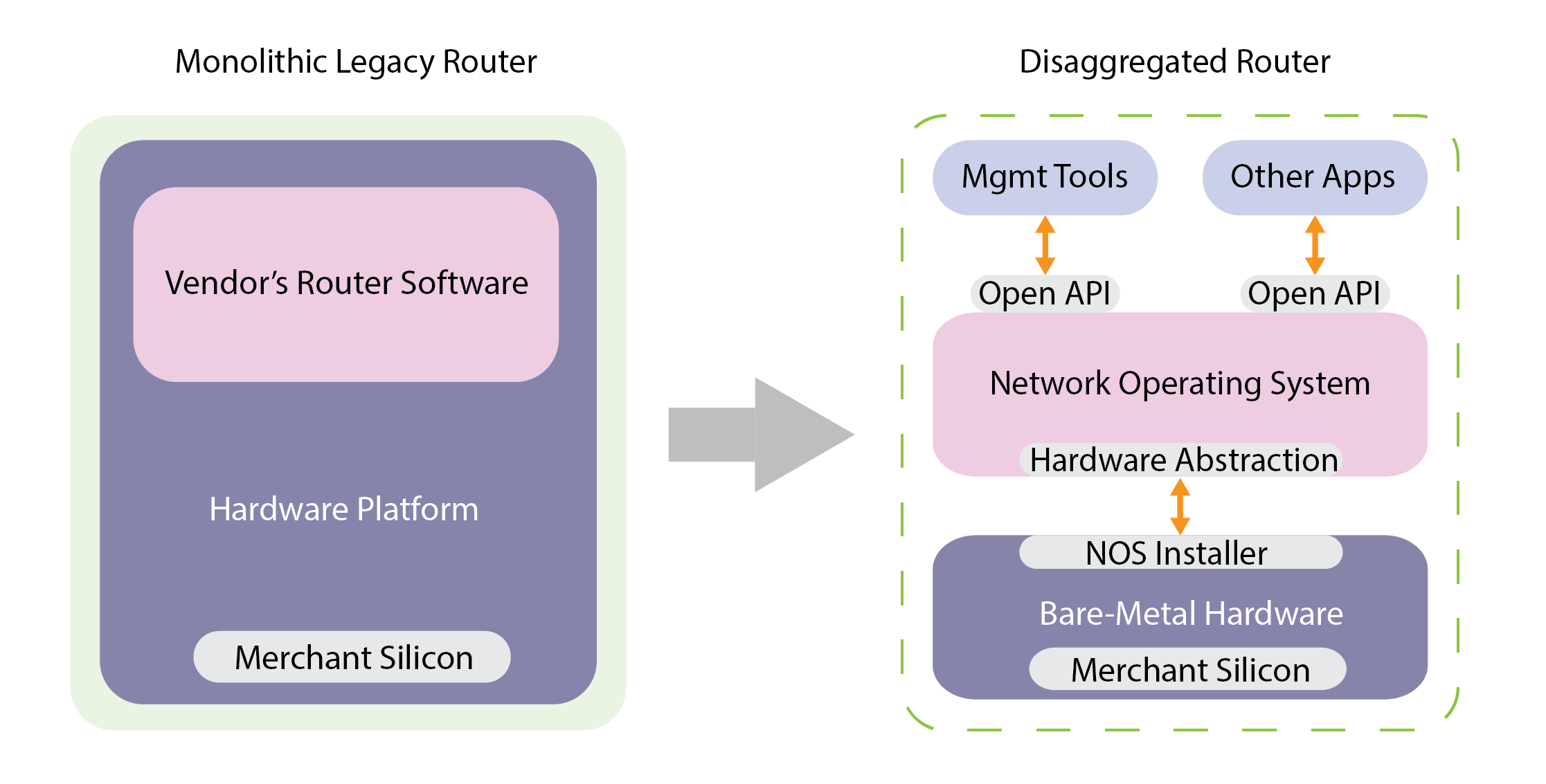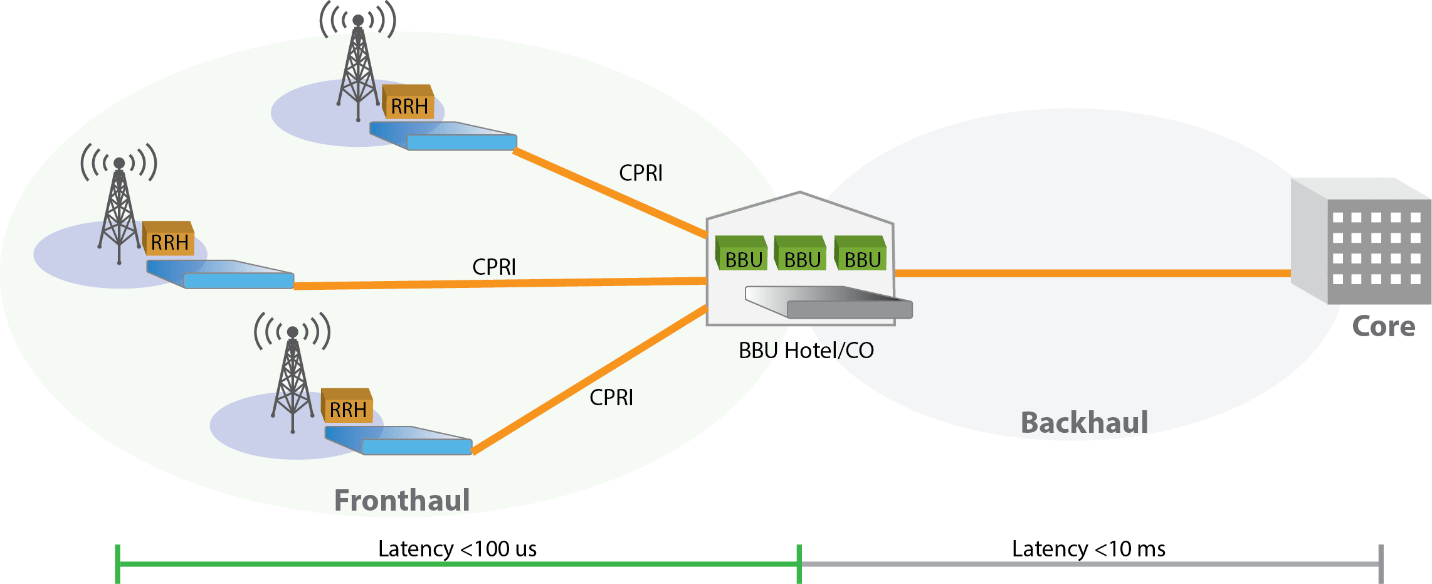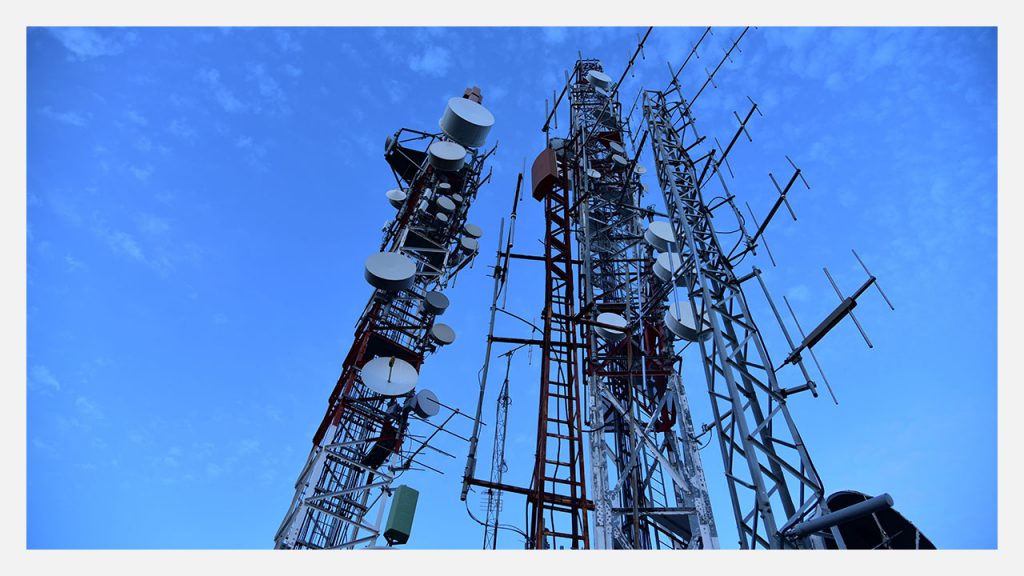Why 5G Networks Need DCSG Routers
Network Operators Embrace Disaggregation for 5G
As mobile network operators move towards 5G they face the huge challenge of upgrading and expanding their infrastructure. Most of the upgrades are required in the access segment of the network, rather than in the aggregation or core, and in particular at cell sites. With 5G access data rates expected to reach up to 10 Gbps, operators need to make substantial investments in cell site equipment to support 5G deployment. Not only are there increased data rates, the average 5G cell will be much smaller but far more numerous.
To meet the demands for new 5G infrastructure, mobile network operators have embraced open networking and disaggregation as a solution. The disaggregation of hardware and software reduces both capex and opex, removes vendor lock-in, and facilitates greater innovation. For cell site deployment, the Telecom Infra Project’s (TIP) Open Optical & Packet Transport (OOPT) project group have defined specifications for an open white-box cell site gateway router. This disaggregated cell site gateway (DCSG) device is designed with sufficient port density and speeds for 5G networks, and is compact and efficient for easy deployment at cell sites.
How do 5G Networks Benefit from Disaggregation?
Disaggregation is the enabler of open network architecture. The basic concept of disaggregation is simple: the separation of hardware and software. However, whereas hardware consists predominantly of merchant silicon, software tends to have multiple components and layers. Therefore, a disaggregated cell site router might well consist of an operating system and several other components interfaced through open application programming interfaces (APIs). Additionally, the hardware platform requires an abstraction layer within the operating system to enable the software to be fully compatible with the hardware.

A disaggregated system’s bare-metal hardware and open software components form the basis of open networking. Open networking allows contributions from multiple hardware and software vendors, resulting in the following benefits for 5G networks:
- Reduced capex and opex: More choice and competition for both hardware and software results in reduced costs.
- Removes vendor lock-in: No dependence on a single vendor means more choice.
- Optimal price/performance: Having more choices means being able to build a system that fits a specific application.
- More innovation: Vendor competition gives rise to new solutions and cost savings.
- Better horizontal scaling: More options for incrementally increasing capacity by adding hardware boxes.
DCSG Deployment in 5G Networks
With the advantages of disaggregation clear and the need for new hardware that can handle 5G traffic volumes, the Telecom Infra Project’s (TIP) Open Optical & Packet Transport (OOPT) project group set out to define specifications for an open white-box cell site gateway router. The router device needed to support sufficient port density and speeds for 5G networks and yet be easily deployed at current 2G/3G/4G cell sites.
Typically, the disaggregated cell site gateway (DCSG) is located in the access segment of the 5G transport network, providing a backhaul link to the aggregation network. Designed specifically for cell site deployment, the DCSG router needs to be compact and environmentally hardened, with all ports and features accessible from the front panel. The TIP DCSG specifications encompass these requirements and include other features, including multi-unit stacking and time synchronization support.
Cell sites generally consist of one or more Remote Radio Heads (RRH) at the tower connected to a local Baseband Unit (BBU). A cell site router aggregates traffic from BBUs and then backhauls it over an aggregation network to the operator’s core. The following diagram illustrates how DCSG routers can be deployed in a typical radio access network architecture.

As mobile operators move to 5G networks, there is not only increased traffic and data rates to accommodate, but also a vast increase in the number of small cell sites. To adapt to 5G, there has been a trend to move BBUs away from cell towers and co-locate them in “BBU Hotels” at nearby central offices (COs), which enables further cost savings and efficiency. In this network architecture, the RRHs are connected to the BBU hotel with a “fronthaul” transport that uses the Common Public Radio Interface (CPRI) protocol. The fronthaul network is particularly time sensitive where generally the latency between RRHs and the BBU hotel must be under 100 microseconds, whereas the backhaul latency only needs to be better than 10 milliseconds. The end-to-end latency of the fronthaul network consists mostly of the transport distance and jitter, where the DCSG is only responsible for a few microseconds. More important for the DCSG is to provide time synchronization support so that 5G networks can meet precise phase requirements.

A DCSG Router Example
Based on TIP specifications, Accton’s DCSG router provides a flexible mix of 10 Gbps, 25 Gbps, and 100 Gbps transceiver interfaces, with all ports, power supplies, and a fan tray placed on the front panel for easy access. Additionally, the compact 1RU chassis is only 30 cm deep, providing easy installation in locations at small cell sites where space may be limited.
The Accton DCSG router (shown below) includes the following features:
- Dual front-panel power supply units
- Front-panel replaceable fan tray (4+1 redundant fans) with its own alarm port
- GNSS, 1PPS/TOD, and BITS timing ports
- 20 x 10 GbE transceiver ports
- 4 x 25 GbE transceiver ports
- 1 x 100G uplink transceiver ports
- 2 x 100G stack backplane ports
- Stack control and synchronization ports
- Deep packet buffering
- Out-of-band management and console ports, USB storage port

New 5G Networks Offer Expanded Opportunities and Services
As mobile network operators adapt and evolve their networks for 5G, the advantages of an open disaggregated network architecture becomes clear. New DCSG routers are needed that can support the increased 5G data volumes and yet be compact, efficient, and simple to maintain. In addition, mobile operators are rapidly transforming their network architectures with the adoption of “midhaul” networks as well as fronthaul, and introducing new transport protocols. The virtualization of BBUs and other network functions, the support for network slicing, and the introduction of multi-access edge computing all lead towards a world of greatly expanded opportunities and new services.





